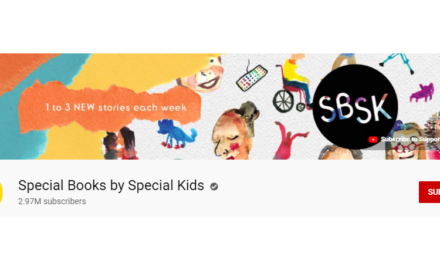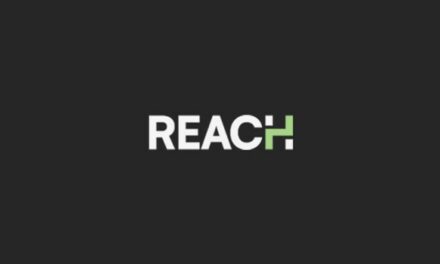It can be hard to find motivation in the business numbers – especially early on when it feels like the needle barely, if ever, moves. But you do have numbers, and they do have value. And that is why you need to calculate ROI. Every download of a video or podcast. Every publication of a blog post or newsletter. It all has value (or potential value).
Let me introduce your new best friend: return on investment (ROI).
Marketing and sales teams for businesses around the world calculate ROI to see what their brands can expect based on the effort they put into their work.
You should do the same for your content enterprise, no matter how big or small — and it’s not as hard as you might think.
Calculate your content enterprise ROI after your first revenue. It's not as hard as you might think, says #podcaster Ashley Stryker. #contententrepreneur Share on XCalculating current ROI
Determining the ROI of your audience and content boils down to quantifying your audience, total content assets, operating time, and all revenue streams. The ROI is a tally of how much each episode, engagement, or day is worth.
Let me use my tiny content business — a new podcast (The Professional Confessional) — to calculate an ROI example.
A couple of weeks ago, I earned my first revenue. A subscriber opted for the $10 USD monthly tier. (I use the Ko-Fi platform for my subscription sales.)

Now, I know the revenue amount, I can look at the other numbers through my podcast platform Buzzsprout, which gives me a great dashboard of total metrics for a bird’s eye view:
- Total downloads: 232
- Episodes: 8
- Total days in operation: 73

Now that I have the numbers for my revenue, audience, content, and operation time, I can assess my early return on (content) investment in several ways:
- Audience ROI: total revenue divided by total downloads (or engagements, views, etc.)
- $10 revenue / 232 downloads = $.04 per download
- Content ROI: total revenue divided by total number of content pieces
- $10 revenue / 8 content pieces = $1.25 per content piece
- Time ROI: total revenue divided days in operation
- $10 revenue / 73 days in operation = $0.14 per day
In my first 2 ½ months of operation, I earned 4 cents per download, $1.25 for every piece of content created, and 14 cents per day working on the business.
I won’t be quitting my day job anytime soon, that’s for sure. But, considering The Tilt research indicates content entrepreneurs take an average of nine months before seeing their first revenue dollar, I think I’m doing alright.
1. Audience ROI = total revenue / total download (or views) 2. Content ROI = total revenue / total number of content pieces 3. Time ROI = total revenue / number of days in operation #creatoreconomy Share on XEstimating potential ROI
Since they’re my first subscriber, I don’t yet know my churn rate or the cross-selling opportunities when I offer additional products. However, I can estimate the subscriber’s worth over the long term – the lifetime value (LTV). With no historical data, I figure the LTV based on similar estimates from industry sources with more data than I have right now. (You’ll do this a lot in the beginning when you are learning to calculate ROI.)
I found this relevant financial modeling article, which gained more credibility when cited by subscription giant Patreon. It reports an active Patreon subscriber retention rate is 13.1 months.
Active @Patreon subscriber retention rate is 13 months, says @fableandfolly and @Patreon. #ROI #churn #contentbusiness Share on XThat estimate isn’t a perfect comparison since I use Ko-Fi, not Patreon. Still, I’m comfortable estimating my current subscriber is worth at least $120 over the lifetime of their subscription – $10 a month for 12 months.
Now, let’s assume I see the same performance and output for the year (73 days in operation multiplied by 5 = 365 days). My annual calculations would be:
- Audience ROI: (total subscribers * total LTV per subscriber) / total downloads
- (5 subscribers * $120 revenue) / 1,160 downloads = $0.52 per download
- Content ROI: total LTV subscriber revenue divided by total content pieces
- $600 revenue / 40 content pieces = $15 per content piece
- Time ROI: total revenue divided days in operation
- $500 revenue / 365 days in operation = $1.37 per day
If I keep on the same pace, next July, I will have earned 52 cents per download, $15 for each content piece, and $1.37 for each day of operation.
Of course, I expect my growth will be greater than one new paid subscriber every 73 days. As my podcast library grows, it offers more listeners an opportunity and reason to subscribe – driving up my total revenue.
I calculate ROI as a tangible motivation to keep moving forward.
Evaluate how content is projected to perform on your bottom line in real time. Create a dashboard in an Excel workbook or Google Sheet that automatically recalculates estimated ROI every time you plug in an updated subscriber, content asset number, etc.
The Tilt created this worksheet to help you calculate actual and estimated ROI. Note: The actual is based on one quarter, while the estimated is based on a year.
To calculate your content #ROI, use our free calculator worksheet: https://bit.ly/ContentROICalculator Share on XBut don’t forget these calculating ROI caveats
These figures do not calculate any churn (i.e., subscription cancellations). You can calculate your own churn rate and incorporate it into your ROI calculations as you see how your subscribers behave. For example, if you have 100 monthly subscribers, and your churn rate is 25% – that is, you’ll eventually lose one of every four subscribers – your annual estimate should use 75 subscribers in the ROI calculation.
These ROI calculations are designed to identify gross revenue, not profits. It’s a method to estimate the cash that will come into the business. To calculate profits, you should deduct all expenses required to generate the content and run the business.
Your ROI estimates will change as your business grows – audience numbers increase, new products or services added, expanded pricing structures, etc. Rerun these calculations at least quarterly – maybe monthly or even weekly if things seem to be changing quickly.
Don’t make major decisions for your content business too quickly. My podcast isn’t even three months old; I have a single subscriber. It would be foolish to think that “no one likes my content format” or “my subscription tiers are too expensive” with such a small sample size. I’ll keep trucking along until I have more feedback – maybe 25 subscribers or 18 months’ worth of episodes.
Don't let ROI influence major decisions too quickly in your early-stage content business. Podcaster Ashley Stryker says she's waiting until at least 25 subscribers or 18 months of episodes. #contententrepreneur Share on XMoney isn’t everything – report on the qualitative results, too. Content entrepreneurs usually don’t see immediate cash returns on their investment of time, talent, and resources. However, you can see non-tangible returns more quickly, such as:
- Connecting with people well known in your industry or niche who might promote your work now or in the future. (For example, famous YouTuber JackSepticEye saw his channel initially rise to stardom after a mention by fellow YouTuber and fan PewDiePie.)
- Learning something new about your audience to inform a change in your approach, which leads to more engagement or subscribers? (One market research firm estimates a single survey response might cost $50 to $150 to get similar insights.)
- Earning a commission or freelance work through your content’s audience. (I landed a full-time job in part because of my recent work in podcasting. That’s $40K more a year than I had been making with this client because they decided to move me full time.)
Adding up your business
Even as my podcast is tiny, I know from my own research and The Tilt’s that my ROI will only increase as I continue investing in quality content, consistent publishing, and relevant distribution methods. I look forward to seeing my numbers increase over time.
What sort of ROI will your content generate? Use #ContentEntrepreneur to let us know or join us in The Tilt Discord community to discuss.
About the author
Ashley Stryker is the director of marketing atAlaniz Marketing, a remote inbound marketing agency.
Ashley is also the creator and host of theProfessional Confessional podcast, where guests describe how their biggest professional mistakes changed their work, careers, and approach forever. Listen to the latest episodes atPC-Podcast.com(new episodes released at 7 a.m. US ET Tuesdays) and support the podcast atPC-Podcast.com/Support.
When unplugged from work and the podcast, Ashley can be found with her husband and toddler son-gremlin in Nottingham, Maryland. (Go Ravens!)










